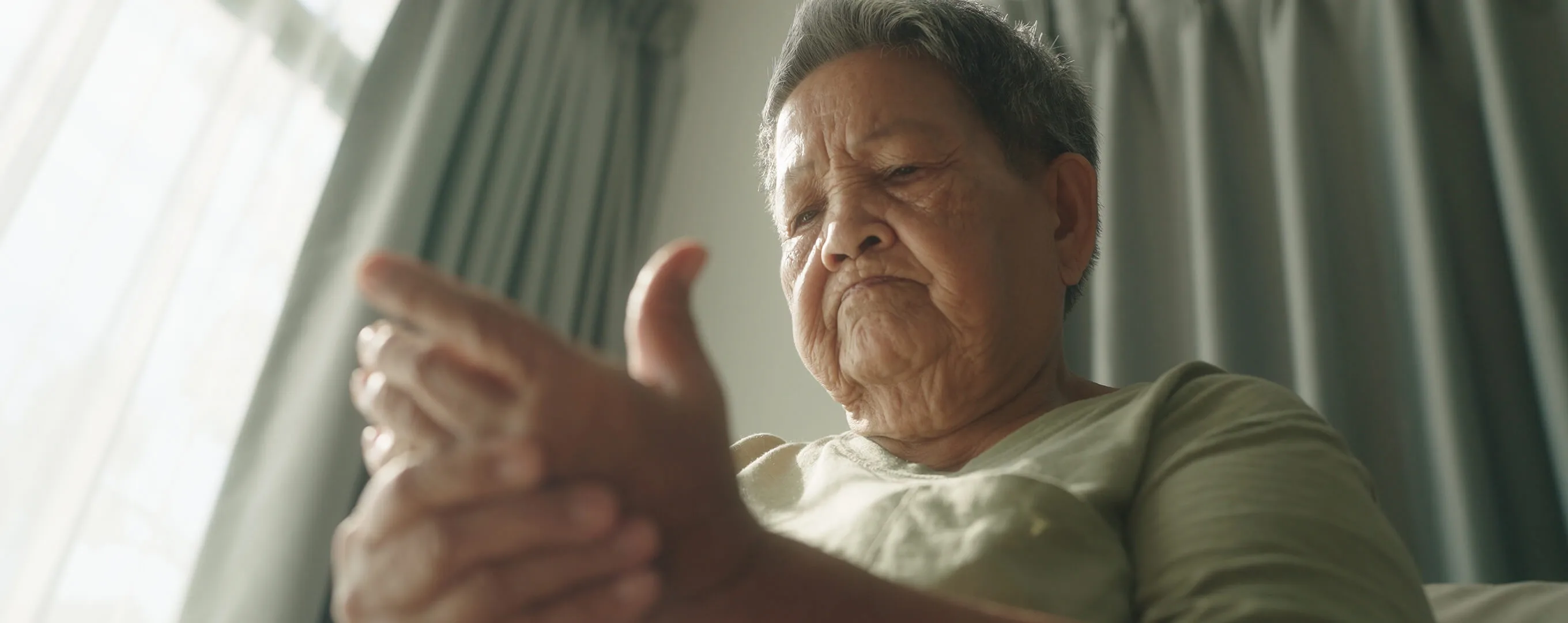Why We Should Be Talking About Dupuytren’s Contracture

Think about how many times you use your hands each day and what it would be like if they did not function properly. Everyday tasks may be difficult to do, like1:
- combing your hair
- shaking someone’s hand
- typing on a computer
- making dinner
- enjoying your favorite hobby
This is a reality for an estimated 17 million Americans who suffer from Dupuytren's contracture.2,3*
Signs and Symptoms
Caused by a buildup of collagen in the hand, Dupuytren’s contracture is marked by a rope-like cord that pulls one's finger(s) toward the palm so finger(s) cannot be straightened.1,4 As the condition progresses, individuals may find it difficult to use their hands for daily tasks and activities. It is a lifelong condition that may get worse over time.
For most patients, Dupuytren’s contracture affects the metacarpophalangeal (MP) joint, where the finger meets the palm, and the proximal interphalangeal (PIP) joint, or the knuckle, in the ring and/or little finger(s).4 The hand condition most commonly affects adults over 40 and tends to run in families.5
Tabletop Test
The Tabletop Test is a simple way to see if someone may have Dupuytren’s contracture.1 People who are unable to lay their hand flat against a tabletop should talk to a Hand Specialist and ask about Dupuytren’s contracture.
How to Get Help–One Patient’s Advice
People with Dupuytren’s contracture may get misdiagnosed with conditions such as arthritis and trigger finger. Additionally, they may delay seeking treatment altogether, oftentimes due to fear of surgery or thinking surgery is their only option.1,4 The condition is not well-known, so patients may go years before seeking treatment, all the while experiencing discomfort and disruption to their lives.
“As a guitar player, it was really affecting my career,” said Clint, a Dupuytren’s contracture patient. “I kept thinking, my pinky just isn’t quite doing what it used to.” Learn more about Clint’s story.
Anyone experiencing symptoms of Dupuytren’s contracture should find a Hand Specialist near them to discuss treatment options.
Watch real patients with Dupuytren’s contracture share their stories.
For additional information or to find a Hand Specialist, visit factsonhand.com.
* Dupuytren's contracture prevalence estimation calculation: average Dupuytren's contracture prevalence in the US (5%) multiplied by US population (332 million per 2021 US Census data)=~17 million.
References
1. Bayat A, McGrouther DA. Management of Dupuytren’s disease – clear advice for an elusive condition. Ann R Coll Surg Engl. 2006;88:3-8.
2. How common is Dupuytren disease? Dupuytren Research, Group. April 1, 2017. Accessed: April 16, 2024. https://dupuytrens.org/faq/
3. US and world population clock. US Census Bureau. Updated April 13, 2023. Accessed April 11, 2023. https://www.census.gov/popclock/
4. Hurst LC, Badalamente MA, Hentz VR, et al. Injectable collagenase clostridium histolyticum for Dupuytren’s contracture. N Engl J Med. 2009;361(10):968-979.
5. Trojian TH, Chu SM. Dupuytren's disease: diagnosis and treatment. Am Fam Physician. 2007;76:86-89



